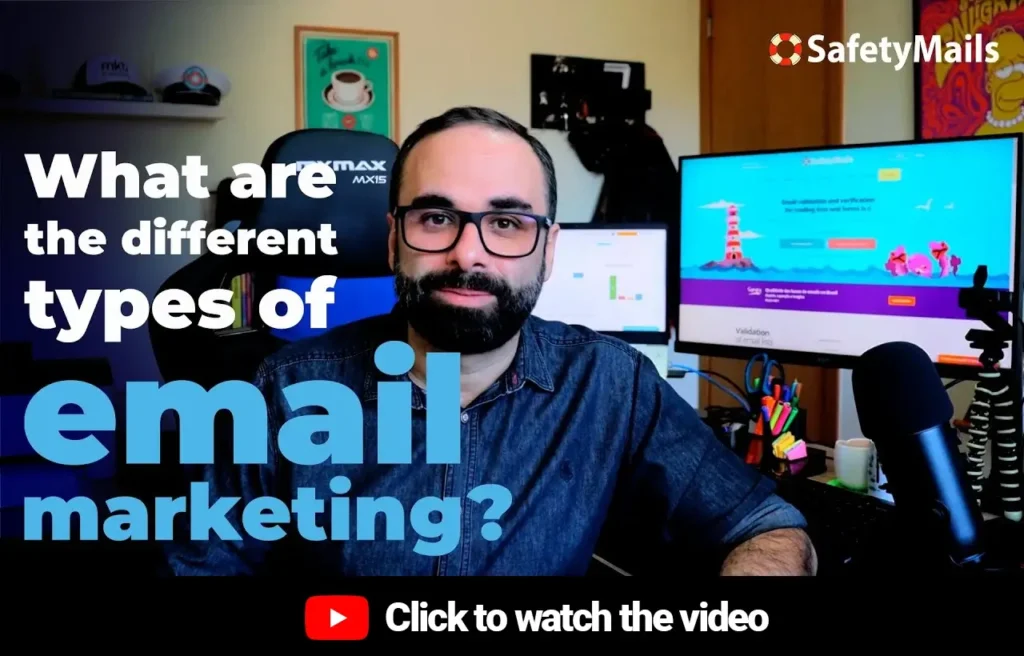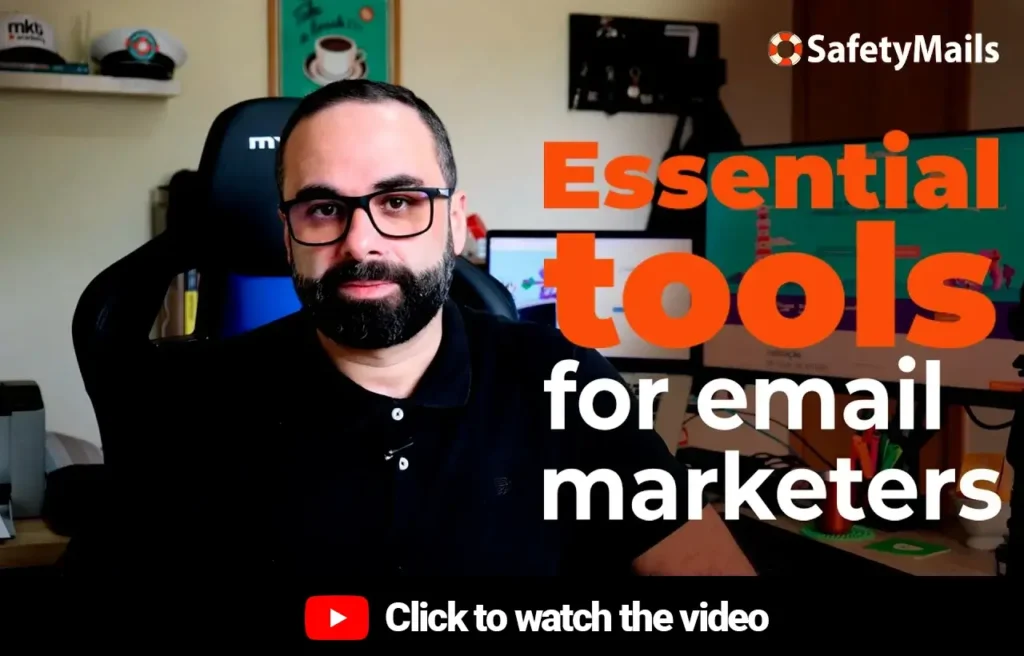Working on an effective email strategy requires dedication. Faced with so many other tasks that need to be done every day in digital marketing, it is possible that some important steps are overlooked, and thus the full potential of email marketing as a tool can be undermined.
With this in mind, we have developed this short manual, seeking to address the most important items for developing a good email marketing strategy.
In a nutshell, there are 9 key points addressing the most relevant issues to be considered when planning email marketing campaigns, at any level and with any objective, alone or in conjunction with other actions.
To illustrate the path we will follow, we present the map below:
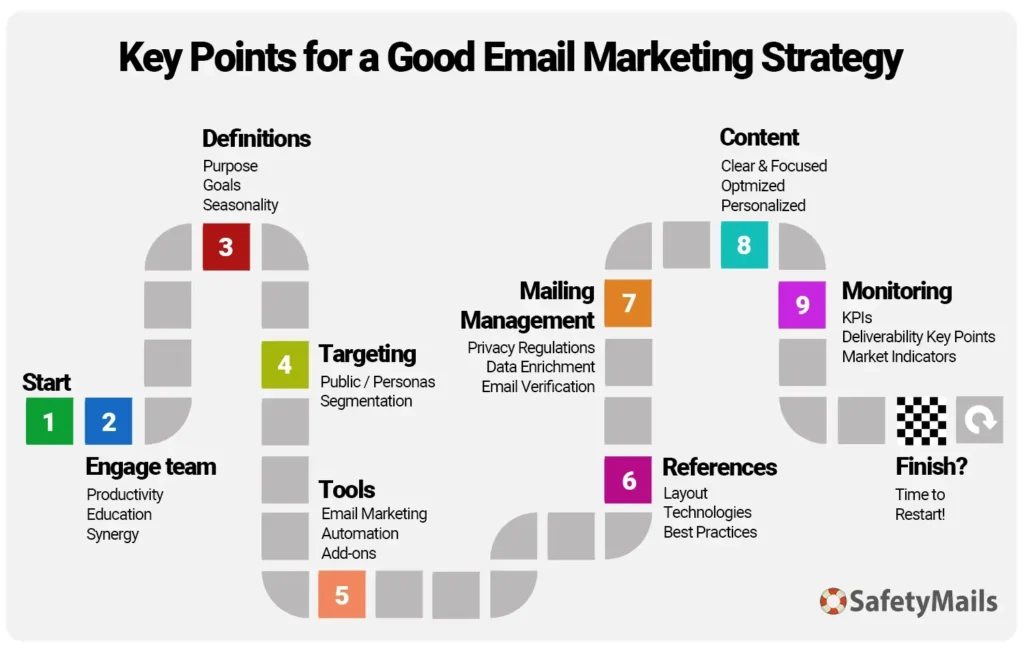
Table of Contents
- 1️⃣ Time to start
- 2️⃣ Get your team involved in the email strategy
- 3️⃣ Go to the definitions
- 4️⃣ Get to know your audience
- 5️⃣ Make use of the tools at your disposal
- 6️⃣ Look for good references
- 7️⃣ Build a proper mailing list
- 8️⃣ Produce targeted, high-quality content
- 9️⃣ Monitoring
- 🏁 Finish line
- Conclusion on email strategy
- FAQ
1️⃣ Time to start
It may sound cliché, but the first step towards a good email strategy is to decide to actually start.
That is, making the decision to do email marketing the right way, in search of excellent results, following the best market practices in each of the key aspects of this digital media.
Obviously, getting started assumes that you will carefully analyze each of the items on this roadmap, so that all aspects are correctly addressed.
So, to get started: grab your notebook, open your spreadsheets, take stock of everything that’s important, complete your checklists and look at the results. It’s time to turn email marketing into a well-configured machine.
2️⃣ Get your team involved in the email strategy
Before moving forward with any initiative, it is important to have the support and collaboration of the company’s teams.
Everyone must be committed to the success of digital marketing actions, especially email marketing.
Productivity
When the teams in the departments that depend on email marketing results are aligned, everyone can contribute to the success of email marketing, directly or indirectly.
The sales department can correctly target the best offer items and the best commercial conditions. The CRM will obtain the best segmentations, based on characteristics and behaviors, aligned with the actions, etc.
This awareness of collective responsibility for results increases productivity and leads to real gains in conversion and return on investment.
Hold alignment meetings and establish responsibilities for each team. This way, your email marketing strategy is much more likely to succeed.
Training
An interesting aspect of engaging the company’s internal teams with email marketing lies in the foundation of education and training.
For example, making sure that professionals (including the board of directors) are up to date on regulations relating to privacy and data protection, as well as best practices for lead generation, data enrichment, relationships and long-term results, is very important for aligning everyone’s expectations.
This helps to avoid friction and unreasonable requests, such as requests to buy bases or to increase the number of campaigns sent at the last minute, looking for “magic conversions” to meet targets, which only end up creating reputational problems, unsubscribes and non-compliance with regulations. All of this is detrimental to the email marketing strategy.
Invest in training, documentation and also make the intended plans clear, so that everyone is fully aware of the steps, how to act and what to expect in each one.
Synergy
Working together to build something of value. This is one of the best definitions of synergy. It means that all the departments involved and dependent on email marketing actions, i.e. digital marketing, sales, relationship, after-sales, support, among others, must be aware and acting proactively and collaboratively so that the email strategy is worked out in the best possible way.
3️⃣ Go to the definitions
“If you don’t know where you’re going, any road will get you there” (Lewis Carroll). In other words, to take the first step in creating an email marketing campaign, you need to know what the intentions of the campaign are. And we can already tell you: there are many possible intentions. Therefore, ignoring this moment of definition is extremely detrimental to the results of the actions and will also hinder the rest of the planning, since there will be no clear objective to achieve.
Purpose
The first step in this phase is to define the purpose, i.e. what you want to do in terms of the action.
Various email actions can be grouped into four main groups: promotional, sales, content distribution and transactional.
Promotional actions aim to promote something or a situation. For example, an email action that is publicizing an event or supporting other offline actions.
Sales emails, as the name suggests, have the clear purpose of making a sale. They can be emails more focused on converting sales of just one product with a higher added value or offer a small portfolio of products, as in an insert. This group also includes cart recovery emails.
Setting Goals
Just as important as knowing the objective is knowing the goal to be achieved. For example, if your goal is to start running, you need to set a distance. But common sense is essential, since demanding a 42-kilometer marathon from someone who has never run before is an unattainable goal and therefore doomed to failure.
Knowing this, set goals that are in line with your reality and, of course, plan improvements for the future.
Here are some goals you can set at this point:
- Target engagement rate
- Deliverability improvements (such as going from 88% to 92% inbox placement)
- Target conversion rate (such as number of registrations, hits or downloads)
- Total sales or number of sales
- Return on investment expected – ROI
MailChimp, the email marketing platform, provides one of the most popular benchmark tables of opens, clicks and conversions by market. It’s worth doing a search and checking out the data.
Seasonality
Be aware of seasonal events, especially those in your market or niche. Special dates, recurring events, personal dates – it’s all worth establishing an email strategy and positively exploiting a moment. In this way, you create an experience of connection with your target audience.
4️⃣ Get to know your audience
Since we’re talking about target audiences, it’s important to know them and their preferences.
It’s also possible to define audience segments for the same business, and you’ll notice that there are ways of communicating and offering content and offers for each segment.
Dedicate yourself to mapping these audiences properly and getting to know them in depth. That way, you’ll be able to define what to offer, when to offer it, on what occasions (seasonality), the type of language and appropriate emotional triggers.
Target audience, personas
The correct definition of the target audience, and also of the persona, helps you to identify your ideal customers, allowing you to be much more precise in your communication, with content and offers.
This is because by understanding this aspect in depth, you can understand the needs, desires and behaviors of this audience.
And this understanding translates into content and offers that lead to greater identification between the recipients and the brand, strengthening the relationship and promoting greater loyalty and conversions in your email strategy.
Segmentation
Sending emails to your entire subscriber base is never a good strategy. The chances of being blocked are higher, for example, due to excessive volume or low engagement.
Segmentation is one of the most interesting features of email marketing platforms, and a very practical possibility for those who can rely on CRM departments within their companies.
In other words, by making segmented email campaigns (and some even advocate micro-segmentation, with really small lists) you will be investing in higher engagement and conversion rates, as you will be able to promote much more targeted content and offers.
If you want, you can invest in producing several segmented campaigns, thus covering a larger slice of the recipients on your contact lists.
5️⃣ Make use of the tools at your disposal
Make use of all the technologies available that can help you, both from the point of view of productivity and operational and analytical support.
We’re not just talking about email marketing tools, but also support tools such as image optimizers, AI resources, research into market overviews, websites and deliverability monitoring tools.
Email Marketing
For obvious reasons, in order to carry out your email marketing actions you will need an… email marketing platform! Well, actually, any platform that has email marketing functionalities. Nowadays, platforms have multiple uses.
Automation
There is data to support the superiority of trigger-based and transactional emails. These can have up to 70.5% more opens and 152% more clicks (Moonsend data) than traditional emails. Welcome emails, for example, can have open rates of 91.43% (Hive.co)
Of course, it’s impossible to react manually to all the recipient’s interactions, such as reacting to someone who has created a welcome account or clicked on a hyperlink, or even trying to recover a purchase from a lost cart.
That’s why we have to rely on automation features in the platforms we hire and also in our internal systems.
Add-ons
There are many tools that can support the daily work of digital marketers, helping them to analyze results, optimize processes, avoid problems and optimize their email marketing strategy.
- SafetyMails: an email address verification platform that removes invalid email addresses, spamtraps and other threats from your lists that can harm deliverability.
- Litmus: this platform allows you to visualize how your emails will be displayed in different email clients and devices, as well as offering spam and rendering tests.
- Canva: well known, this service helps you create email designs without the need for advanced graphic design knowledge, with customizable and easy-to-use templates.
- OptinMonster: this platform promises to help you build your email list with pop-ups, scroll bars and other types of sign-up forms to convert visitors into subscribers.
- Google Analytics: integrating your email campaigns with Google Analytics allows you to track the impact of your campaigns on website traffic and conversions, providing valuable insights for future optimizations.
6️⃣ Look for good references
A good way to get inspiration for your creations is to find references to successful campaigns.
There are email marketing campaigns that have a beautiful and functional layout. Others whose subject line was innovative and captivating. There are also those that made good use of new technologies.
Using these ideas as a source of creativity (not copying) is a great first step for those who aren’t sure where to start.
Layout
We know that a good color scheme and the correct positioning of elements can represent a visual experience for the recipient. The experience is completed with a call-to-action with adequate size and prominence, leading the recipient to interact and convert with the email campaign sent.
Therefore, to find good layout references, we recommend that you have an email account just for receiving email marketing: promotional actions, newsletters and much more. Sign up for numerous sites on purpose. See what these emails look like, what time they are delivered, and where the hyperlinks go.
Another way is to visit websites such as Really Good Emails, which acts as a repository for more than 12,000 selected emails from campaigns sent by various companies, segments and purposes.
Technology
We’ve talked on other occasions about AMP email, an innovative technology that allows emails to be used as fully functional websites.
However, when we talk about the day-to-day life and implications of this technology, we know that it’s not suitable for all email providers and that it’s not necessarily easy to program either. But that doesn’t mean you shouldn’t invest in technological innovation in your email strategy.
For example, your email could feature interactive elements such as countdown timers, videos or small games. There are much simpler ways (and some are even native to the email marketing platform) to apply these technologies to email campaigns.
When we talk about behind-the-scenes email marketing, the possibilities multiply: trigger-based campaigns, automations, behavioral segmentation, user-generated content, among others.
Good practices
Research best practices in the market in order to make processes more optimized, functional and secure.
For example, good practices in layout production make the email lighter to load, free of elements that lead to blocks and with more user-friendly rendering, avoiding failures and problems with the elements of the message.
Good sending and reputation practices lead to better deliverability and avoid blockages.
The same kind of concern with adopting good practices in mailing construction also avoids spam complaints, helps to build mailings that are better suited to the business and avoids privacy and data protection problems.
7️⃣ Build a proper mailing list
Don’t buy mailing lists, don’t do email harvesting or scraping. Invest in good content production practices to attract visitors’ attention organically.
Follow best practices for sending, collecting emails, privacy, etc., in accordance with guidelines and regulations.
Privacy regulations
You need to ensure that all methods of capturing emails for your databases comply with privacy and data protection regulations.
And around 71% of the world’s countries already have legislation of this nature. But practically all of them have very similar elements. The most important thing is to be aware that the data subject’s permission is essential, as is total transparency about what will be done with the data.
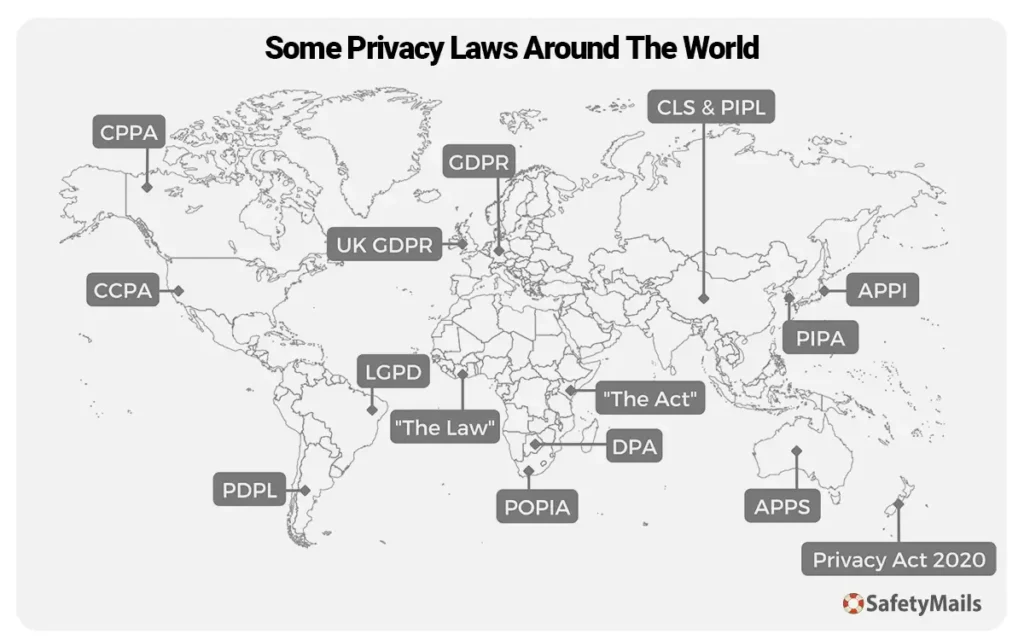
If you want more details about any data protection regulation, visit https://unctad.org/page/data-protection-and-privacy-legislation-worldwide
Data enrichment
The better informed you are about your recipients, the better your segmentation and personalization will be.
So take every opportunity to gather information: collect behavioral information (such as purchase history, average ticket, visits, preferred products, etc.).
Using content marketing techniques can also help you get more information from your recipients. For example: launch new and interesting content, leading to intelligent forms that can collect different data with each visit from the same lead.
Email verification
As part of the whole process of attracting new email contacts, ensuring quality is an essential step.
Therefore, investing in email validation and verification practices will ensure your ability to engage with your new leads.
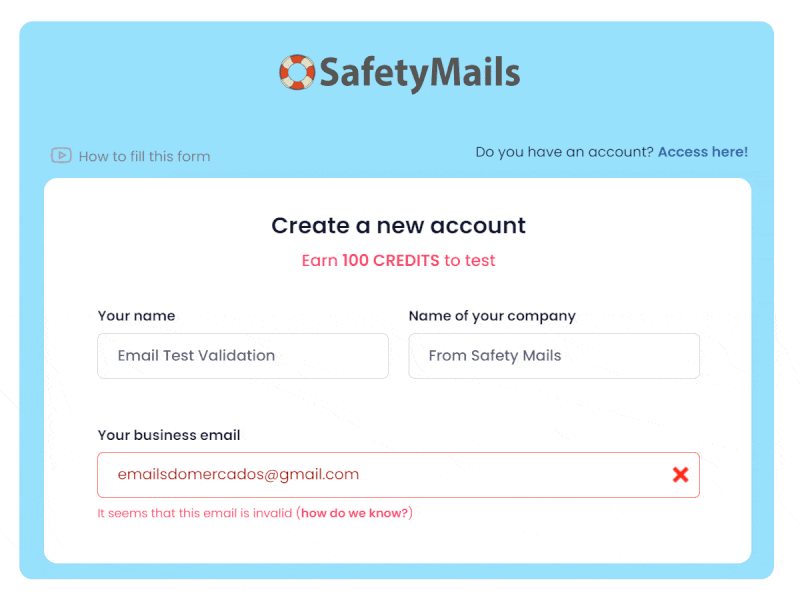
Insert validations in registration forms that are able to identify common errors. Use double opt-in registration confirmation. Install real-time email verification, which is able to identify and prevent the registration of invalid emails, spamtraps and temporary emails.
8️⃣ Produce targeted, high-quality content
After being able to deliver your email in the best possible way, and have your content displayed in the best possible way, you need to ensure that this material is interesting and engaging enough to encourage the recipient to interact with the suggestion given, either to access other content or a specific offer.
Focused and straight to the point
To catch your readers’ attention, make the content of the email clear and to the point. Avoid beating around the bush and get to the main point, highlighting the benefits and the desired action concisely. In this way, you maintain engagement and prevent recipients from abandoning.
Optimized
Use relevant keywords, proper formatting and light images to improve delivery and the user experience. Well-optimized emails have a greater chance of reaching inboxes and being effective.
In addition, ensure that the formatting of the email is easy to read. Clearly establish headings, subheadings and paragraphs to lead recipients to your CTA.
Personalized
Personalization is a powerful differentiator. Use data such as name, purchase history and preferences to create personalized messages that relate to each recipient. This approach increases the relevance of the content, promoting greater engagement.
Along with personalization, invest in activating positive emotional triggers. These help to build an emotional connection with your brand.
9️⃣ Monitoring
Tracking the progress of email marketing activities and setting future objectives for actions is important, and monitoring all the important metrics depends on it.
KPIs
Of course, we can’t ignore the basics! Email marketing platforms offer essential metrics for evaluating the effectiveness of email marketing campaigns.
These include:
- Open rate
- Click-through rate
- Conversion rate
- Unsubscribes
- Complaints
- Bounce rates
- Contact list growth rate
Tracking these metrics is important not only for evaluating the email campaign itself, but also for building a track record and allowing you to set more concrete goals for the future.
Metrics are also an important thermometer of how specific items in your email marketing strategy are doing. For example, high rates of hard bounces already indicate that you need to adapt your email list building. Low click-through rates already raise warnings about layout and usability.
Deliverability monitoring
The more emails delivered to the inbox, the greater the exposure of the content in the recipient’s main attention space. This increases the chances of engagement and conversion.
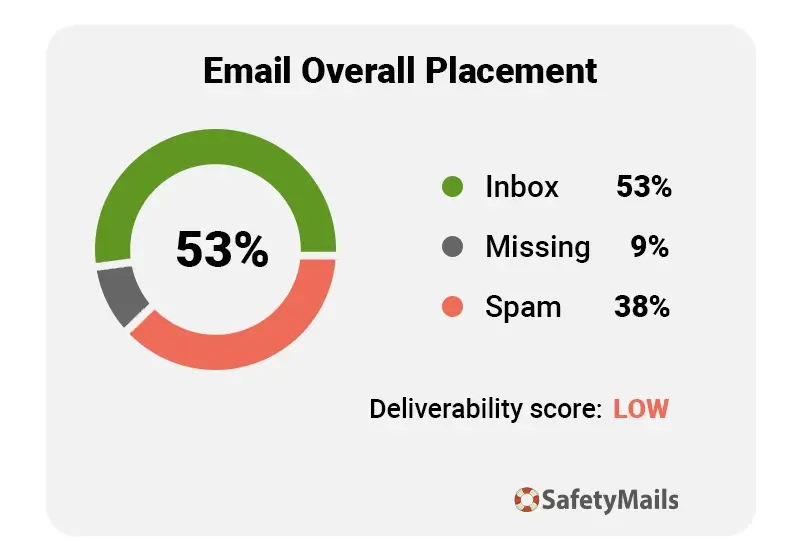
Therefore, monitor deliverability rates in order to maintain an upward curve and ensure that as many messages as possible are delivered well.
Aim for deliverability rates above 93%. For more information on this topic, read our blog post.
Market indicators
One of the ways to measure the success of your email marketing actions is to follow market benchmarks.
Just be careful not to compare different market segments, because they have different behavioral characteristics. Some markets have higher open rates and others lower. This does not mean that they are more or less efficient. This will be measured by a number of other factors.
🏁 Finish line
This moment of completion of your strategies should not be seen as the end of the process, but as a time to re-evaluate the measures taken along the way, readjusting and optimizing strategic items in order to make the results better and better.
So, when you arrive, start again!
Conclusion on email strategy
Reaching the end of the development of a successful email strategy is just the beginning of a continuous cycle of improvement and adjustments.
Constantly analyzing results, evaluating key metrics and adapting to changes in audience behavior will help maintain the effectiveness of your campaigns. And with each new campaign, use the lessons learned from previous campaigns to optimize your approaches, always seeking to innovate and connect more deeply with your audience.
Finally, remember that email marketing is a dynamic and powerful tool, capable of generating significant results when managed well. So take advantage of this roadmap to develop an increasingly efficient and impactful email strategy.
FAQ
Involve your teams, define purpose, goals, target audience, personas and segmentation, explore the possibilities of tools and platforms, promote good email list management, create optimized and personalized content, monitor each aspect of performance, deliverability and market indicators and, finally, reassess and start again.
Segmentation allows you to send more relevant and personalized content to different groups within your contact base. This increases the chances of engagement and conversion, as well as improving the sender’s reputation and reducing bounce rates.
The ideal frequency varies according to your audience and the type of content you offer. It’s important to find a balance to maintain interest without overloading recipients. Test different frequencies and monitor engagement rates to find the right rhythm.
Use KPIs such as open rate, click rate, conversion rate, bounce rate and unsubscribes. These metrics help you understand the performance of your campaigns and identify areas for improvement. Also monitor deliverability and market indicators.
To improve deliverability, keep your contact list up to date and clean, use authentications such as SPF, DKIM and DMARC, segment your campaigns and personalize the content. Also, monitor deliverability metrics and make adjustments as necessary.
Effective email marketing should have an attractive subject line, a responsive design, relevant and personalized content, as well as a clear and visible call-to-action. These elements together help to capture the recipient’s attention and encourage them to take action.
To prevent your emails from landing in the spam folder, avoid excessive use of words that trigger spam filters, maintain a good sender reputation, obtain explicit permissions from recipients and provide an easy-to-find unsubscribe link.



